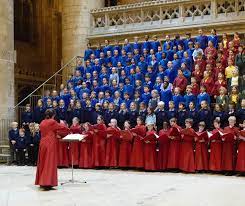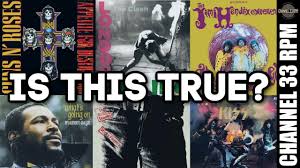Protecting Musical Heritage – Preserving the Soul of Sound
In a world where cultural traditions are constantly evolving, it is imperative that we take steps to protect and preserve our musical heritage. Music is not only a form of entertainment but also a reflection of our history, identity, and emotions. It has the power to transcend language barriers and connect people across generations.
One of the key challenges in protecting musical heritage lies in the digitization and globalization of music consumption. While these advancements have undoubtedly made music more accessible, they have also led to the dilution of traditional forms and regional styles. As popular genres dominate the airwaves, indigenous sounds risk being overshadowed or forgotten.
To safeguard our musical heritage, we must first recognize its value and significance. Governments, cultural organizations, and communities need to work together to identify and document traditional music forms unique to their regions. This involves conducting research, recording performances, and archiving historical records.
Education plays a vital role in preserving musical heritage as well. By incorporating traditional music into school curricula and community programs, we can ensure that younger generations are exposed to their cultural roots. Teaching them about traditional instruments, rhythms, and melodies will foster an appreciation for their own musical heritage.
Supporting local musicians is another crucial aspect of protecting musical heritage. By attending concerts and festivals that showcase traditional music, we not only encourage artists but also contribute to the preservation of their art form. Additionally, purchasing music directly from local musicians or supporting independent record labels helps sustain diverse musical traditions.
Technology can also be harnessed as a tool for preservation. Digital platforms can be used to create online archives where recordings of traditional music can be stored and accessed by future generations. Collaborative efforts between musicians, scholars, and technology experts can ensure that these archives are comprehensive and easily navigable.
Furthermore, fostering an environment that values and respects cultural diversity is essential. Governments should implement policies that protect the rights of indigenous musicians, ensuring fair compensation for their work and creating opportunities for them to showcase their talent on national and international stages.
Ultimately, protecting musical heritage is not just about preserving sounds; it is about safeguarding the stories, traditions, and identities embedded within them. Our musical heritage is a testament to our shared humanity and should be celebrated as such.
Let us embrace the responsibility of preserving our musical heritage for future generations. By doing so, we can ensure that the soul of sound continues to resonate through time, connecting us to our roots and enriching our collective cultural tapestry.
Eight Essential Strategies for Safeguarding Our Musical Heritage
- 1. Preserve original recordings and sheet music in a controlled environment to prevent deterioration.
- 2. Digitize analogue recordings and create digital backups to ensure long-term accessibility.
- 3. Encourage public institutions and private collectors to share their collections with the wider community.
- 4. Support local music schools, orchestras, and choirs to promote musical education and appreciation.
- 5. Organize concerts, festivals, and exhibitions showcasing traditional music to raise awareness.
- 6. Promote legislation that protects copyright and intellectual property rights of musicians.
- 7. Collaborate with international organizations to safeguard cross-cultural musical heritage.
- 8. Document oral traditions by recording interviews with musicians and preserving their stories.
1. Preserve original recordings and sheet music in a controlled environment to prevent deterioration.
Preserving original recordings and sheet music in a controlled environment is a crucial step in protecting our musical heritage. These precious artifacts hold the essence of our musical traditions and provide invaluable insights into the past. By storing them in a carefully controlled environment, we can prevent deterioration caused by factors such as temperature, humidity, and light exposure. This ensures that future generations can access and study these recordings and sheet music, allowing us to maintain a tangible link to our musical history for years to come.
2. Digitize analogue recordings and create digital backups to ensure long-term accessibility.
In order to protect musical heritage, it is crucial to digitize analogue recordings and create digital backups. Analog recordings, such as vinyl records and cassette tapes, are susceptible to deterioration over time. By converting these recordings into a digital format, we can preserve the music for future generations and ensure its long-term accessibility. Digital backups also provide an extra layer of security against loss or damage. By taking this step, we can safeguard precious musical treasures and make them available for people to enjoy and study for years to come.
3. Encourage public institutions and private collectors to share their collections with the wider community.
To protect musical heritage, it is crucial to encourage public institutions and private collectors to share their collections with the wider community. These collections often hold valuable recordings, manuscripts, and artifacts that showcase the richness and diversity of musical traditions. By making these resources accessible to the public, we can foster a deeper understanding and appreciation for our musical heritage. Public exhibitions, curated displays, and digital archives are just a few ways in which these collections can be shared. By opening up these collections, we create opportunities for people from all walks of life to explore and engage with our musical past, ensuring that it remains alive and cherished for generations to come.
4. Support local music schools, orchestras, and choirs to promote musical education and appreciation.
Supporting local music schools, orchestras, and choirs is a crucial step in protecting musical heritage. These institutions play a vital role in nurturing young talent and preserving traditional musical practices. By attending their performances, enrolling children in music classes, or even volunteering to support their activities, we can contribute to the continuation of musical education and appreciation. Through these efforts, we not only help develop future generations of musicians but also ensure that our cultural heritage remains alive and vibrant for years to come.
5. Organize concerts, festivals, and exhibitions showcasing traditional music to raise awareness.
Organizing concerts, festivals, and exhibitions showcasing traditional music is a powerful way to raise awareness and protect our musical heritage. These events provide a platform for local musicians to showcase their talent and share their cultural traditions with a wider audience. By bringing together artists, enthusiasts, and communities, these gatherings create an atmosphere of celebration and appreciation for traditional music. They serve as a reminder of the richness and diversity of our musical heritage, inspiring people to value and support these art forms. Through these vibrant events, we can ensure that traditional music continues to thrive and remain an integral part of our cultural fabric for generations to come.
6. Promote legislation that protects copyright and intellectual property rights of musicians.
Promoting legislation that protects the copyright and intellectual property rights of musicians is a crucial step in safeguarding our musical heritage. By ensuring that musicians have legal protection for their creative works, we can encourage innovation and artistic expression while also providing fair compensation for their contributions. Such legislation not only discourages piracy and unauthorized use of music but also fosters an environment where artists feel valued and motivated to continue creating. By advocating for strong copyright laws, we can support the sustainability of our musical heritage and ensure that future generations can enjoy the fruits of artistic talent while respecting the rights of those who create it.
7. Collaborate with international organizations to safeguard cross-cultural musical heritage.
Collaborating with international organizations is a crucial step in safeguarding cross-cultural musical heritage. Music knows no boundaries, and by working together on a global scale, we can ensure that diverse musical traditions are protected and celebrated. By sharing knowledge, resources, and expertise, these collaborations can help preserve the richness and beauty of music from different cultures. Through joint efforts, we can create platforms for cross-cultural exchange, promote understanding and appreciation of diverse musical expressions, and ensure that future generations inherit a world where the tapestry of global music remains vibrant and alive.
8. Document oral traditions by recording interviews with musicians and preserving their stories.
An important tip for protecting musical heritage is to document oral traditions by recording interviews with musicians and preserving their stories. These interviews allow us to capture the rich history, cultural significance, and personal experiences behind traditional music forms. By recording these conversations, we ensure that the knowledge and wisdom passed down through generations are not lost or forgotten. Preserving the stories of musicians not only honours their contributions but also provides future generations with valuable insights into the evolution of musical traditions. Through these recorded interviews, we can truly understand and appreciate the depth and beauty of our musical heritage.





